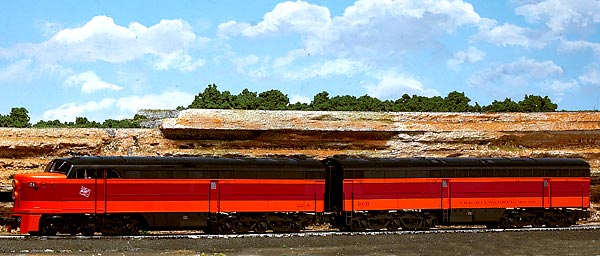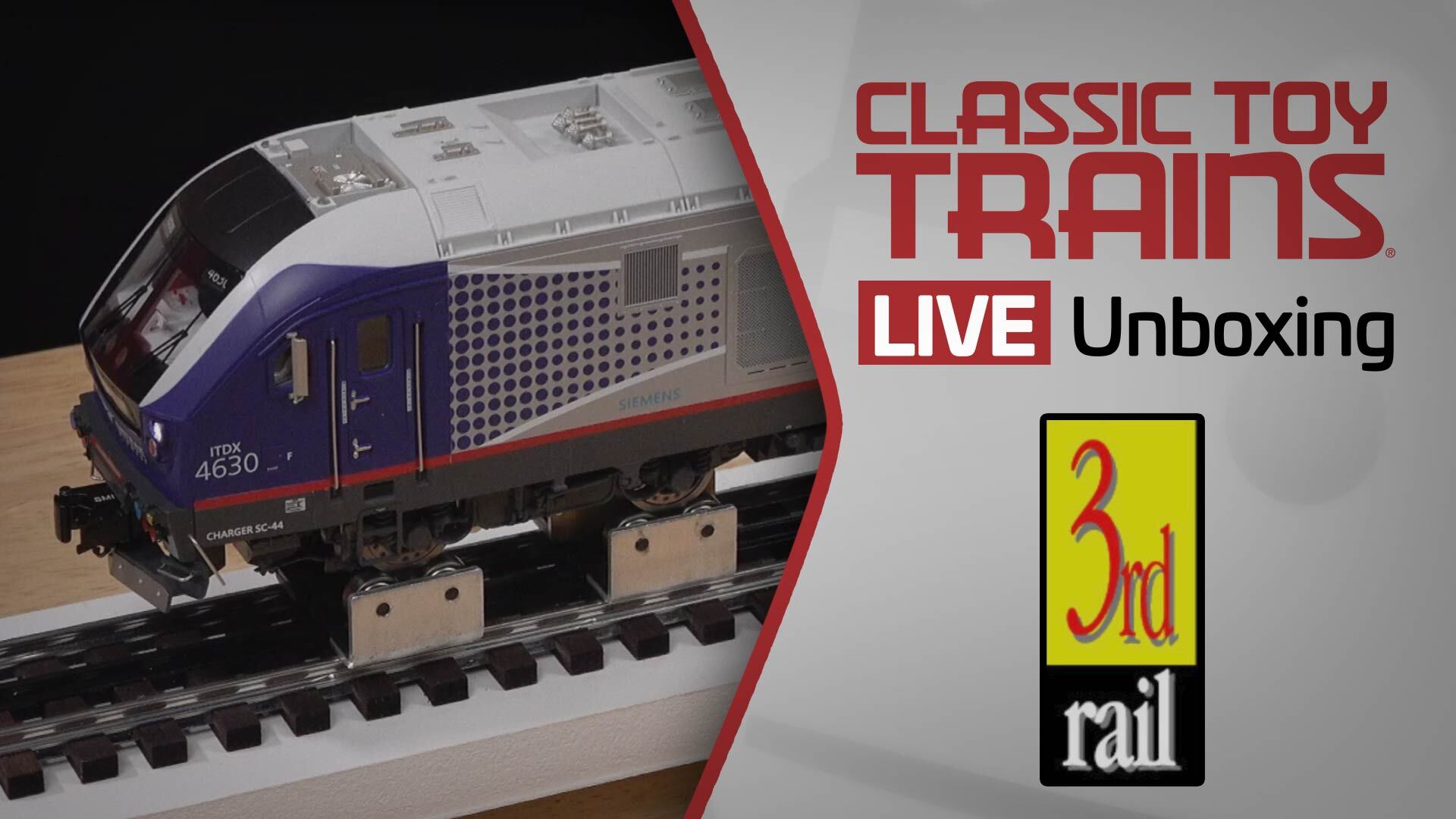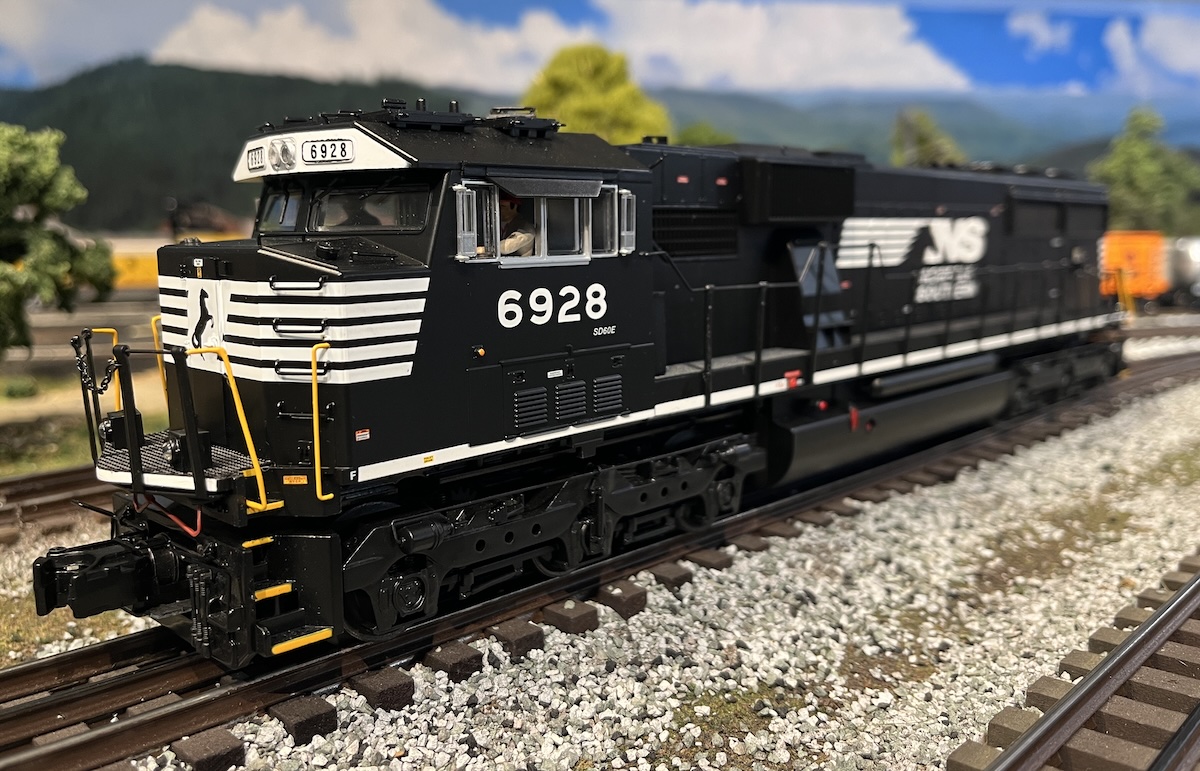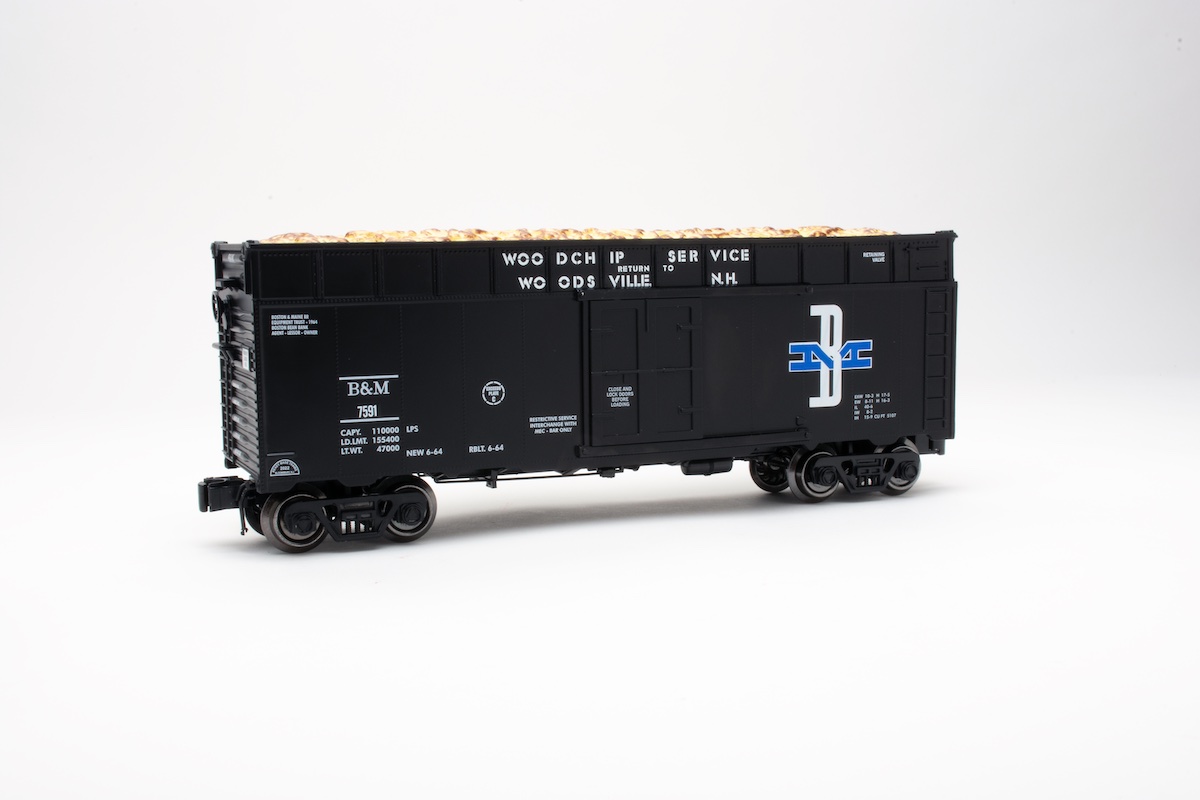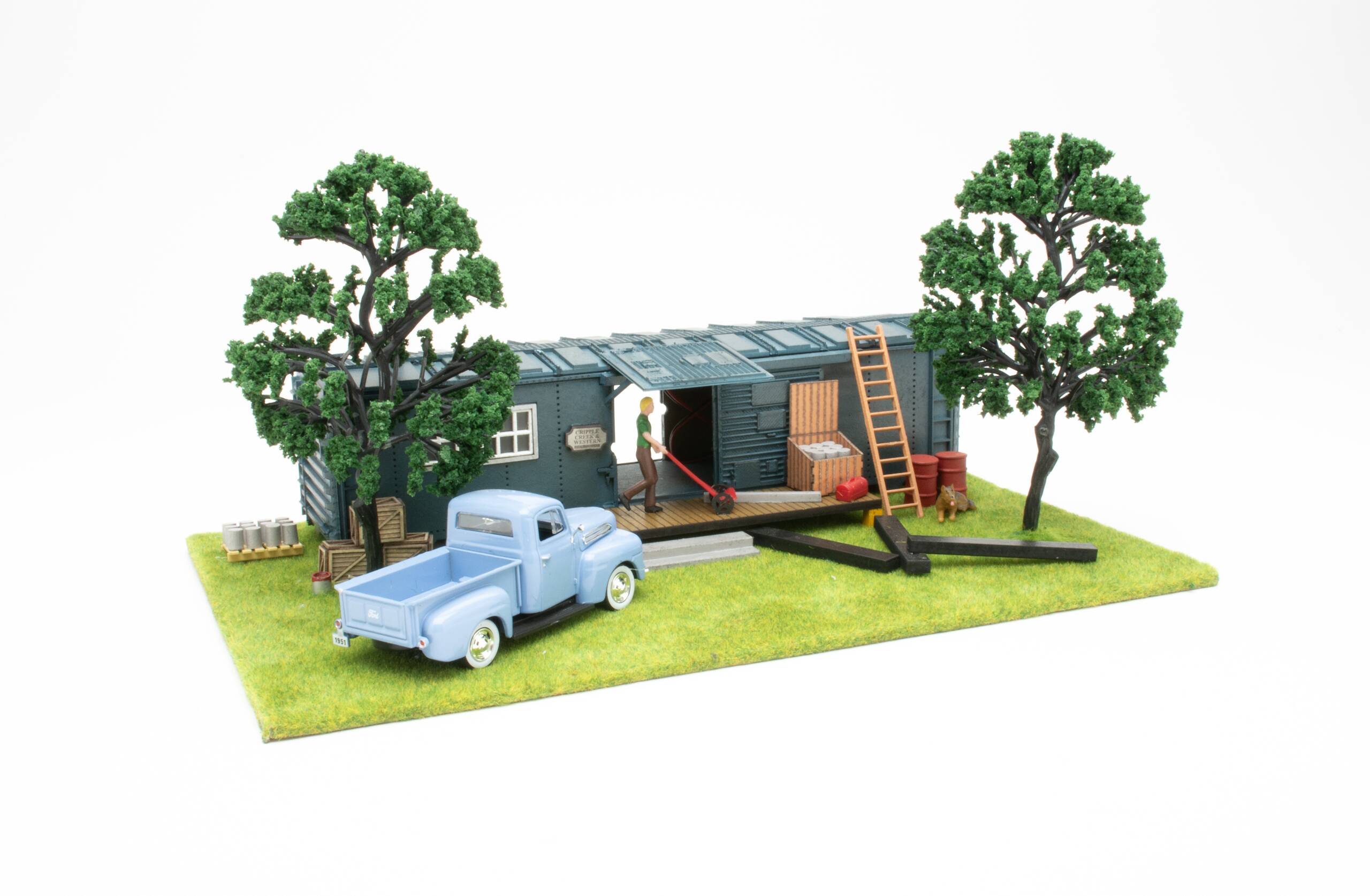During World War II, the federal government placed restrictions on the manufacture of diesel locomotives. Firms could make only those models that they had been producing prior to the war.
That was good news for GM’s Electro-Motive Division, which was allowed to build road units. Alco and Baldwin were limited to yard switchers. Fairbanks-Morse, which was making opposed-piston diesel engines for U.S. Navy vessels, wanted to join the locomotive market, but it had yet to manufacture its first locomotive. It was left out in the cold.
Federal guidelines loosened in 1943. Fairbanks-Morse was allowed to develop an opposed-piston locomotive: a 1,000-horsepower diesel switcher for the Milwaukee Road. Pleased though they were with this design, company executives knew they needed to come up with an over-the-road locomotive to shore up the company’s finances. Their efforts culminated with the oddly named Alt.100.3 and Alt.200.3, both rated at 2,000 horsepower and equipped with six-axle, A1A-A1A trucks.
Fairbanks-Morse’s Beloit, Wisc., plant wasn’t able to manufacture such large locomotives, so the firm contracted with General Electric’s Locomotive & Car Equipment Division in Erie, Pa., to handle production. There, 111 “Erie-Built” diesels were constructed; subsequent road units, such as the similar looking “C-Liner” cab units, were produced in Wisconsin.
The Milwaukee Road’s fleet of Erie-Builts totaled 20 A and B units, all to provide power for the revamped Olympian Hiawatha passenger train.
The Hiawatha-service diesels featured distinctive aluminum nose shields and a modified paint scheme to match the streamlined passenger car set.
In time, the locomotives were bumped to less flashy passenger service, and their Hiawatha shields were removed. In the 1960s the classy locomotives were traded to General Motors on an order of GP30s.
The Erie-Builts weren’t bad diesels – they just arrived at the party too late. Although Fairbanks-Morse cranked out more than 1,300 opposed-piston locomotives, ultimately their prime movers were too unconventional to economically remain in service.
Among the 32 Fairbanks-Morse diesels preserved in North America, none is an Erie-Built.
The model
As with all the Atlas O diesels I’ve reviewed, the Erie-Built passed the unscientific “how-does-it-feel-when-you-lift-it” test. The model is hefty and solid, which counts for a lot in my book.
The appearance of the Erie-Built offers a distinct alternative to EMD’s F-series cab locomotives. The body is beefy, like the Alco PA, but instead of wearing a wide snout along the lines of Jimmy Durante’s, the nose of the Erie-Built is more petite, more like Myrna Loy’s.
This is Atlas O’s first model of a postwar-era cab unit. With the level of superdetailing we’ve experienced with previous Atlas O road switchers, the streamlined body shell seems almost plain by comparison. Still, there are plenty of rivets and superstructure supports cast into the body. Grills and louvers are also cast in.
The roof has cast-in seam and rivet detail as well as cast-in lift rings and holes to add smoke fluid. There are two exhaust fans beneath some finely crafted screens. The fan blades revolve, if you blow into them hard enough.
The A unit features five opening doors and six pairs of add-on handrails. There’s a functioning diaphragm on the end of the unit. Crew figures can be found in the cab, and a gray curved shield hides the can-style motor affixed to the front truck (the second motor is out of view).
Illumination includes headlights, number boards, and marker lights. The dual headlight system features a pulsating light that effectively suggests a rotating Mars light, as well as a lower, steady-illumination beam. There are grab irons on the frame out front and a pair flanking the headlights.
Atlas O includes some extra detail items, including brake-line and multiple-unit cables. In the box you’ll also find a closed-front frame-mounted pilot in case you want to remove the lead coil coupler and the truck-mounted open pilot. Instructions for the swap are in the owner’s manual. Also in the box is a 9-volt battery for the Lionel RailSounds system. What more could you ask for?
The model’s frame measures 62 feet in O scale (151/2 inches) while the prototype’s coupler-to-coupler distance was 64 feet, 10 inches.
The B unit, which must be purchased separately, looks as powerful as the A-unit. Its size, coupled with the unit’s magnificent three-axle trucks, is terrific.
Let me take a minute to discuss the trucks. They are great examples of what can be done with die-cast metal parts. Atlas O has re-created some wonderful-looking side frames in the past, and these are no exception. The casting is superb, and add-on pieces, such as springs, brake appliances, and sand lines, are top notch.
The black, orange, and maroon paint scheme on our Milwaukee Road sample – though simple – was superbly finished. Details like the accent lines separating colors and the railroad’s shield were skillfully applied. The Erie-Built is offered in New York Central, Pennsylvania, Union Pacific, Chicago & North Western, and Santa Fe road names in multiple road numbers and as an undecorated model. A special edition Erie-Built is offered as an Olympian Hiawatha model, including the distinctive nose shield. But it lists for $220 more than the regular model.
On the test track
Performance was strong and up to the high standards set by previous Atlas O locomotives we have tested.
Drawbar pull for the 5-pound, 7-ounce locomotive was 2 pounds, 8 ounces.
In low speed testing, we recorded an average of 14.9 scale mph in conventional-control mode. The high-speed average was 83.2 scale mph. Low speed dropped all the way down to 3.24 scale mph in Lionel TMCC command-control mode utilizing Engineer On Board (EOB) speed control. The speed-control system, designed by TrainAmerica Studios, is factory installed. Pretty impressive.
This is the first locomotive we’ve tested with a factory-installed EOB speed control from TrainAmerica Studios (A post-manufacturing EOB installation was reviewed in the January 2004 issue).
Don’t let the six pages of instructions regarding EOB make you gulp and shout, “Yikes, what have I gotten into!” EOB is very, very user friendly.
As with MTH’s ProtoSound 2.0 speed control, the EOB is simplicity in operation. You can utilize it (or not) in conventional- and command-control modes.
The transformer throttle (or revolving dial on the CAB-1) establishes the speed you desire, and the system maintains that speed. You don’t need to jump through hoops to set or clear a speed.
In TrainMaster Command Control mode, you can operate with either 32 or 128 speed increments, or steps, which will let you run the locomotive with great flexibility.
You can also turn off EOB speed control. But why would you? Mainly for easier operation when running lash-ups with locomotives not equipped with a speed-control system. In my book, EOB is a winner and Atlas O deserves a round of applause for incorporating it into the firm’s product line.
With most major players offering speed control, hobbyists have plenty of choices with comparable features.
The Lionel RailSounds system in the Erie-Built has the deep, robust sound of a Fairbanks-Morse prime mover.
All command-control mode functions all performed very well.
On our different test tracks, of about 250 starts (both with a train in tow and when running solo), there were 10 to 12 instances when the locomotive seemed to hesitate for a few seconds. It would then pick up speed and run fine. This behavior didn’t happen enough to displease me, but it came up enough to notice.
The only glitch experienced during testing was when the rear motor stopped. We popped off the shell and could see no obvious cause like a loose wire or circuit board). Next, we checked the gears, which were definitely binding.
We couldn’t see anything jamming the teeth, so we carefully manipulated the flywheel until the wheels made a 360-degree rotation in both directions. Afterwards the locomotive ran just fine.
We also had the opportunity to examine an Atlas O Erie-Built B unit. The joke was on us when we examined its coil couplers, light lenses, and pickup rollers, expecting bulbs and triggering circuits to fire the couplers inside the shell, although we were puzzled by the lack of a wire tether to coordinate A-unit and B-unit lighting and couplers.
We placed the unit on the track and powered it up. But nothing happened. We took off the shell and found out why. There’s nothing inside.
The coil coupler wires dead end at plastic connectors and there are no bulbs or LEDs behind the lenses. The pickup rollers have no function. We’re guessing that it must have been cheaper for Atlas O to use A-unit trucks (complete with coil couplers, and pickup rollers) than to produce unique dummy trucks.
The Erie-Built is a stylish diesel that will look as different from the ordinary F3 or E8 as does the Alco PA. Atlas O has built a quality locomotive that delivers exemplary performance. Put it on your short list for a test drive at your local dealer.





